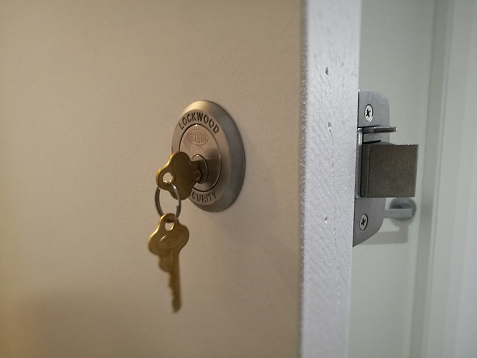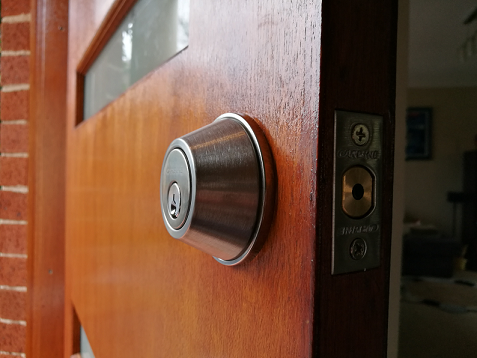I'm often asked why I recommend one lock over another. The quick answer is my professional opinion on the locks security and quality. Here's a bit more detail...
I'll often recommend that a customer installs an additional "deadlock" to an exterior door, or advise them the lock they want to install might not be a deadlock and will likely compromise their insurance policy in the event of a break in. I'm finding that people are buying smart locks, and cheap & nasty mechanical locks from online stores or even their local hardware store and wanting me to install them in place of their existing lock. Instead of grabbing a bargain on a decent product, they're compromising the exact things they wanted to achieve - safety & security.
The problem is they're commonly removing a deadlock and installing a single-sided bolt or latch which will allow a thief to simply turn a handle to unlock the door and escape with bulky items rather than climb back out through a small window. Another common break-in method is to smash the glass panel next to a door and reach around to open the lock. If this happens an insurance company may void a claim. Often stipulated in the insurance policy is the requirement to have adequate deadlocks fitted to the external doors and windows.
What Is A Deadlock?
Put simply a deadlock is a lock that has the ability to lock both sides of the door, requiring a key to open the door. This doesn't mean that the door is always locked... just that the lock has the ability to lock both sides; it can be left in an unlocked state (passage mode) if it has that ability.
What is a Deadbolt and/or Deadlatch?
These are both examples of a deadlock, but they have different locking mechanisms.
Deadbolts are not self-locking, it requires a key to be turned to shoot a bolt into the striker plate on the frame.
Deadlatches are self-locking. If you close the door they have a spring latch that will automatically shoot into the striker plate.
Misconceptions
A single-sided deadbolt is not really a deadbolt - it's technically a single-sided bolt, but people refer to it this way because it resembles a deadbolt apart from the inside which is usually a turn. The overwhelming majority of electronic locks available are single-sided. This is something that should be carefully considered when selecting a lock.
A nightlatch is also not a deadlock. It may always require a key to enter from the outside but the inside just has a turn-to-unlock snib. These are only really suitable for storage doors etc.

An entrance knobset or leverset is not a deadlock. If it doesn't have the ability to lock the inside, requiring a key to open the door from the inside, it's a simple lock.
Another misleading term is the deadlatching pin which refers to the small part of the latch/tongue that you can see on most modern entrance knobsets and leversets. When this pin is pushed in (for example when the door is closed) it will prevent the latch/tongue being forced back... you might have seen someone jiggle their credit card down the edge of the door in a movie and jimmy open the door. The deadlatching pin was invented to prevent this, and you would have to go along way back in time for this method to be effective!

Wrap it Up!...
There you have it - Clear as mud! I suspect that the terminology used in the locksmith/security industry that has mislead the layperson for so long is partly a result of laziness or convenience on the part of the installers, and partly the result of marketing from the manufacturers; "dead" being the emphatic and bold word used to symbolize strength or immovability.
You can avoid making the wrong selection on a lock product. Instead of asking the hordes of self-appointed experts online or in a retail hardware store, ask a locksmith! We do this every day, know the pitfalls, and know the best products to use for the circumstance.




















Comentarios